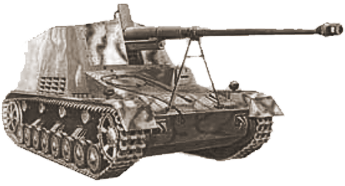Allied Victory in North Africa
By March of 1943 the North African Axis Army was doomed; trapped between two powerful Anglo-American led armies. Moreover, Italian and German forces were reliant on a logistical chain perpetually in crisis, as the Allies enjoyed overwhelming naval superiority and new air bases in Algeria and Libya to launch attacks on Axis shipping. In spite of the tenuousness of the Axis supply lines, they had maneuvered a quarter of a million soldiers and huge stores of equipment and supplies into a Tunisian dead end. The regional German commander, Field Marshal Albert Kesselring, enthusiastically believed his North African armies could hold out; testing his theories regarding defense in depth. The problem for the Axis was that the Tunisian battlefield did not represent the place to test Kesselring's defensive strategy - given Axis logistical weakness. Kesselring would later only belatedly attempt to convince Hitler to order a withdrawal from Tunisia - after the game was up.
Beginning late in March the Allies launched a series of powerful blows from east and west; forcing the Axis armies back on Tunis. The Americans, led by General George S. Patton, rapidly advanced, and from March 23rd to the 24th carved to pieces the counterattacking German 10th Panzer Division near El Guettar. Although the Germans inflicted grievous losses on the American 601st Tank Destroyer Battalion and 899th Tank Destroyer Battalions, both supporting the US 1st Infantry Division, the beleaguered American tank destroyers fought hard and played an important role in decimating the 10th Panzer; as did American artillery fire support. In particular, the American artillery arm began to lay claim to what would become a world-class reputation when it helped crush a late afternoon assault by German panzer grenadiers. The American artillery men employed a combination of tactics, ranging from airbursts to skipping shells off the ground in mangling the assaulting German infantry. Following its abortive counterattack the 10th Panzer Division possessed only 26 tanks, and for the first time in the War, the Americans had stopped a full-scale attack delivered by a German panzer division.
Although the Allied armies faced much difficult fighting in April, by the second week of May the stiff Axis defensive effort had been defeated. Axis losses reached 238,243 soldiers. From late 1942 to early 1943, when the Axis situation already proved next to hopeless, Germany endured 155,000 casualties in Tunisia, in addition to the approximately 130,000 German prisoners of war taken when Tunisia fell. Axis shipping and aircraft losses also represented numbers far out of proportion from what the Axis achieved in the draining and useless North African campaign. For instance, just between November 1, 1942 and May 1, 1943 the Luftwaffe lost 2,422 aircraft in the Mediterranean, including 888 single engine fighters, 117 twin-engine fighters, 128 dive-bombers, 734 bombers, and 371 transport aircraft.
Hitler and Mussolini's North African armies had fought for three years, and achieved virtually nothing. In no small measure, the Axis campaign in North Africa seriously undermined the more important war effort in the Soviet Union. During the North African campaign, Axis losses totaled 620,000 men as casualties or prisoners of war - more than Germany lost during the subsequent Italian campaign. Comparatively speaking the Allies performed much better with total Allied losses at 260,000 casualties - 220,000 British, 20,000 French, and 20,000 American, with 70,000 allied casualties incurred in the fighting lasting from Operation Torch in November of 1942 to the fall of Tunisia in May of 1943.
by Steven Douglas Mercatante



Post new comment